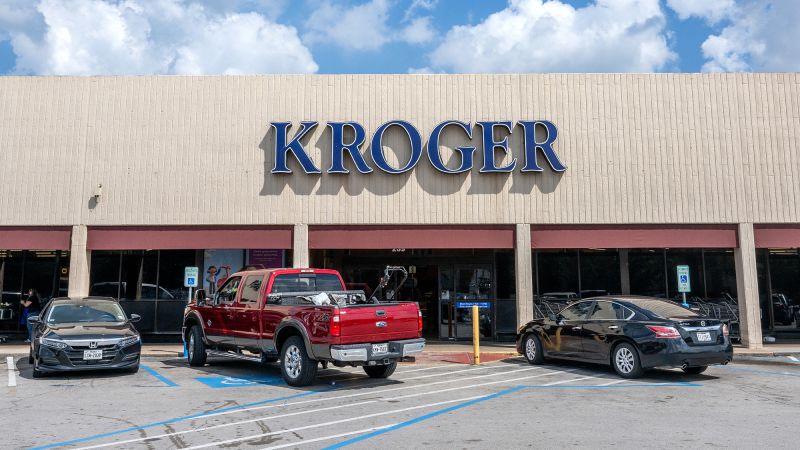Kroger, one of the largest grocery store chains in the United States, recently announced plans to close approximately 60 of its grocery store locations, constituting about 5% of its overall operations. This decision is expected to roll out over the next year and a half, impacting a significant segment of its retail footprint.
The closure of these stores comes on the heels of a failed merger attempt with rival grocery chain Albertsons. The merger, which aimed to create an even larger competitive entity in the grocery market, ultimately collapsed and led the companies into a legal dispute that is still unfolding. The fallout from this failed merger represents a significant setback for Kroger as it seeks to adapt in a continually changing retail environment.
On the financial front, Kroger disclosed in a recent earnings report that the company would incur a $100 million impairment charge as a direct result of these store closures. However, the company noted that it anticipates these closures will yield modest long-term financial benefits. Specific details regarding which stores will close have not yet been provided, and Kroger has not immediately responded to queries for additional commentary on the matter.
Amid the closures, Kroger has pledged to offer affected employees alternative positions at nearby locations. This move not only aids in the retention of its workforce but also highlights the company’s commitment to its employees during a time of transition. Furthermore, the savings from the store closures are earmarked for reinvestments into enhancing the customer experience across the remaining locations.
Currently, Kroger operates roughly 1,200 stores across 16 states in the U.S. Interestingly, the grocery retailer is experiencing a shift in customer behavior, with more consumers opting to eat meals at home rather than dining out. This trend has enabled Kroger to adjust its sales forecast positively for the year, as noted by interim CEO Ron Sargent during an earnings call. Increased home cooking has prompted the grocery chain to refine its business strategy to meet evolving consumer needs.
Kroger has also successfully implemented price reductions on approximately 2,000 products, coupled with a robust promotional effort geared towards its private label offerings. These store-brand items, which are often priced lower than their name-brand counterparts, have gained traction among customers, with sales of private label products surpassing those of national brands for the last seven consecutive quarters. Looking ahead, Kroger plans to launch 80 new protein-rich products to satisfy the growing demand among consumers for nutritious options.
Addressing the future of store operations, Sargent acknowledged that not all locations have yielded the sustainable performance the company requires. He indicated that the regular review of store locations, typically conducted on an annual basis, was not completed during the merger discussions, leading to the current reconsideration of operational efficiencies.
Sargent stepped into the role of interim CEO in March after the unexpected resignation of Kroger’s former leader, Rodney McMullen, which stemmed from an investigation into his personal conduct. This leadership transition represents a new chapter for Kroger as the company navigates strategic changes in management and store operations.
Following the announcement regarding the store closures, Kroger’s stock (ticker: KR) experienced a notable surge, closing nearly 10% higher on the day of the announcement. This positive shift in share price underscores investor confidence in Kroger’s adaptive strategies and long-term vision despite the challenges ahead. As the grocery landscape continues to evolve, Kroger’s response to changing consumer behaviors and marketplace dynamics will be pivotal in shaping its future trajectory.











